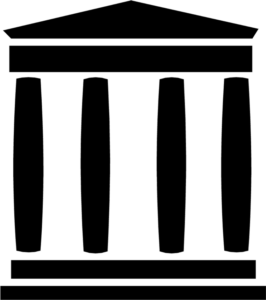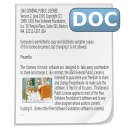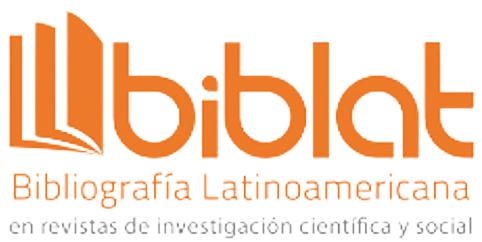The impact of Design Thinking on technology
Abstract
In this article, we explore the impact of design thinking in technology, both in software development and hardware design. Technology professionals have adopted this approach when designing user interfaces, mobile applications, and websites or web platforms. By researching and empathizing with users, frictions and pain points in the user experience can be identified and user-centric solutions can be proposed that improve usability and overall satisfaction. In software development, design thinking improves the user experience by creating more intuitive applications and platforms. Results showed that the application of this approach led to significant improvements in usability, functionality and overall user satisfaction. Similarly, in hardware design, design thinking ensures that physical technology products are aesthetically appealing and functional. Products designed with this approach showed an effective combination of aesthetics and usability, resulting in greater user acceptance and a better overall experience. The synergy between design thinking and technology drives user-centered innovation, combining creativity and human focus with technological capabilities. With iteration, experimentation and complex problem-solving as key elements, design thinking and technology complement each other to create meaningful technology solutions.
Downloads
References
[2] D. A. Norman and C. Röcker, "Design for everyday things: Revised and expanded edition." Basic Books, 2016.
[3] E. Vásquez, J. Carlo, E. Zapata, and E. Enrique, “Marco de trabajo en base a Design Thinking y metodologías ágiles de desarrollo de software,” Universidad Peruana de Ciencias Aplicadas (UPC), 2017.
[4] E. V. Vasilieva and T. E. Tochilkina, “Design thinking and process transformation: synergy of these approaches'', 2020.
[5] F. Maurer and S. Carvalho, "Design thinking as a strategy for innovation: The case of Tesla Motors," International Journal of Innovation Management, vol. 20, no. 7, art. no. 1650044, 2016.
[6] G. A. Quistan Adams, "Propuesta de Sistema Web en la tienda Fierce Man usando la Metodología Design Thinking para la Gestión de Información y Toma de Decisiones,” Universidad Tecnológica del Perú (UTP), 2022. [En línea]. Disponible en: https://hdl.handle.net/20.500.12867/5482
[7] J. S. Contreras Bello, “Design Thinking: metodología para el diseño de productos y servicios multimedia innovadores”, 2020. [En línea]. Disponible en: http://hdl.handle.net/10654/38632
[8] M. Vico C., S. De Francisco Vela y M. Pachón Buitrago, "Cuando el pensamiento en Diseño y el mundo legal se encuentran: Innovación para mejorar la prestación de servicios públicos", RChD: Creación y pensamiento, vol. 6, n.º 11, p. 1, noviembre de 2021.
[9] M. Villius Zetterholm y P. Jokela, "Addressing complexity in the pandemic context: How systems thinking can facilitate understanding of design aspects for preventive technologies", Informatics, vol. 10, n.º 1, p. 7, enero de 2023.
[10] R. M. Gómez Caballero, "Innovación en servicios de salud usando herramientas de pensamiento de diseño", Kepes, vol. 18, n.º 23, pp. 15–48, enero de 2021.
[11] R. Roth and R. Roy, "Design Thinking for Innovative Hardware," in Design Thinking for Innovation. Springer, 2018, pp. 235-256.
[12] S. Hamm, “IBM Design Thinking. Field Guide”, 2016.
[13] T. A. De Medeiros, J. A. T. M. Leite, P. S. Fernandes, V. Y. Suzuki y D. Nicodemo, "Design Thinking e Técnica Delphi na elaboração de um livro digital educativo para unidades de alimentação e nutrição", Brazilian J. Develop., vol. 9, n.º 05, pp. 16407–16423, mayo de 2023.
[14] T. Brown, “Change by Design. How design thinking transforms organizations and inspires innovation. The Power of Design Thinking”, 6.
[15] T. Brown, "Design Thinking," Harvard Business Review, vol. 86, no. 6, pp. 84-92, Jun. 2008.
[16] T. Fadell and R. Erickson, "Reinventing the thermostat: Designing Nest," ACM Interactions, vol. 19, no. 1, pp. 52-57, 2012.
[17] V. M. Rodríguez Macias, “El Design Thinking en la construcción de experiencia de marca: caso específico Airbnb México”, 2019. [En línea]. Disponible en: https://ru.dgb.unam.mx/handle/DGB_UNAM/TES01000790712
Copyright (c) 2023 Innovation and Software

This work is licensed under a Creative Commons Attribution 4.0 International License.
The authors exclusively grant the right to publish their article to the Innovation and Software Journal, which may formally edit or modify the approved text to comply with their own editorial standards and with universal grammatical standards, prior to publication; Likewise, our journal may translate the approved manuscripts into as many languages as it deems necessary and disseminates them in several countries, always giving public recognition to the author or authors of the research.
























